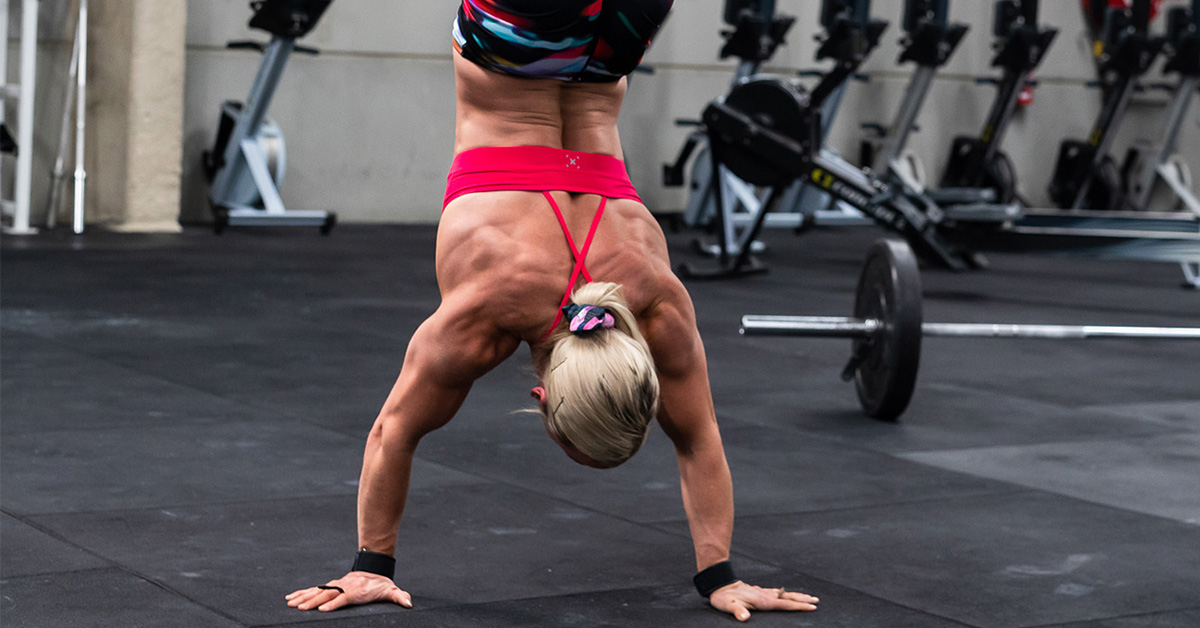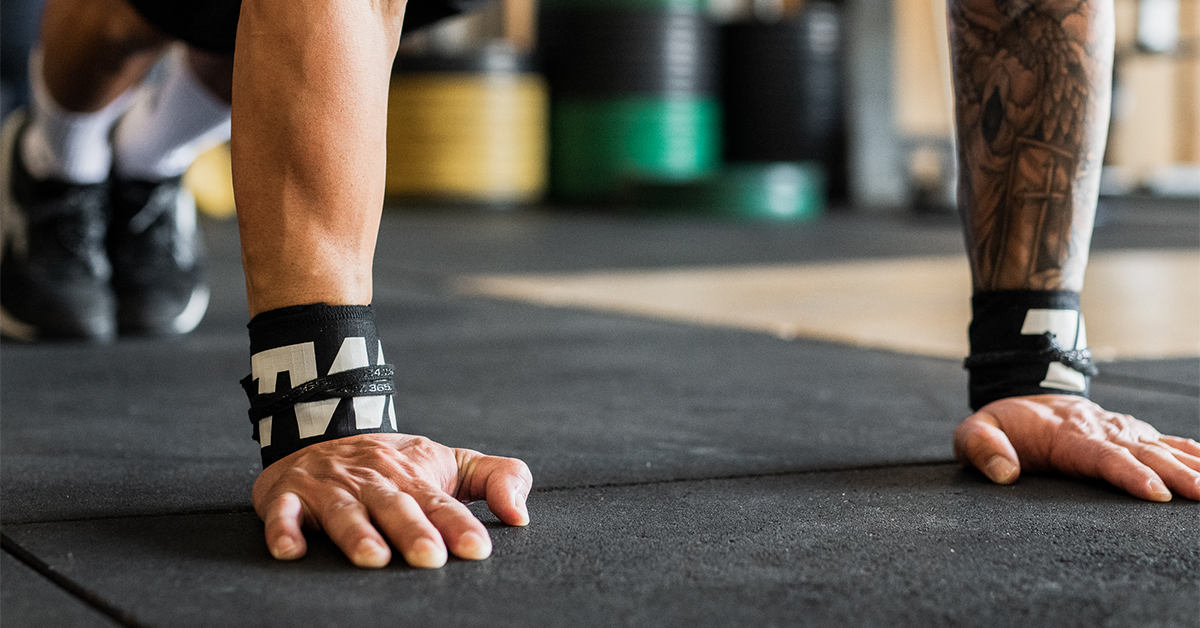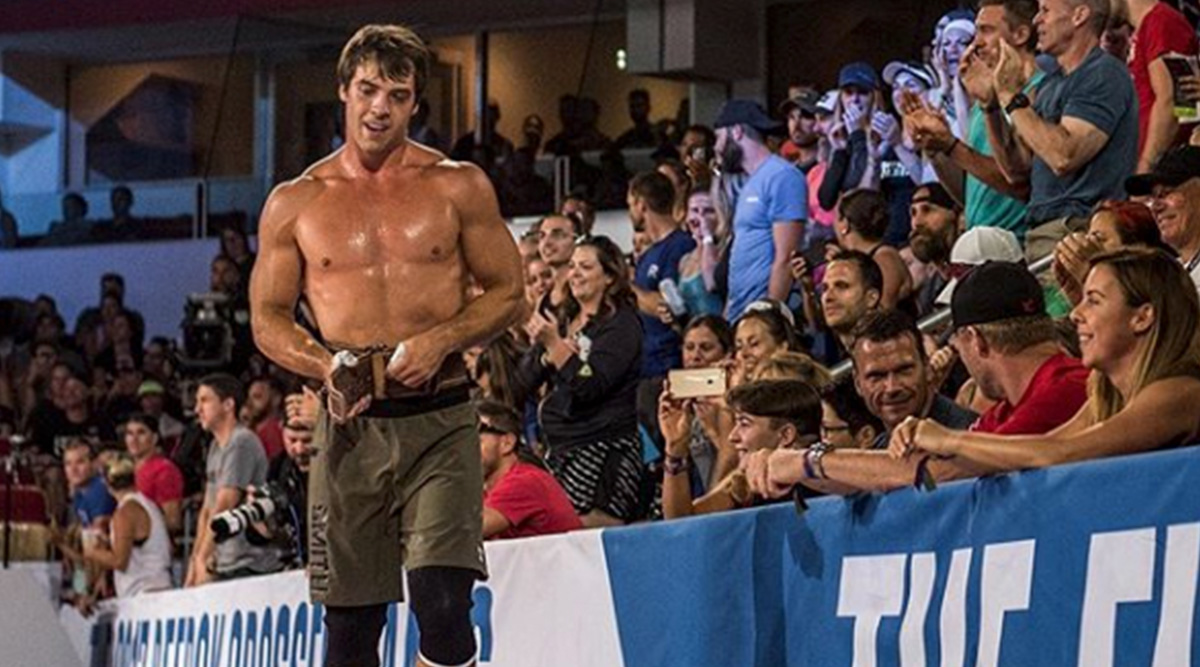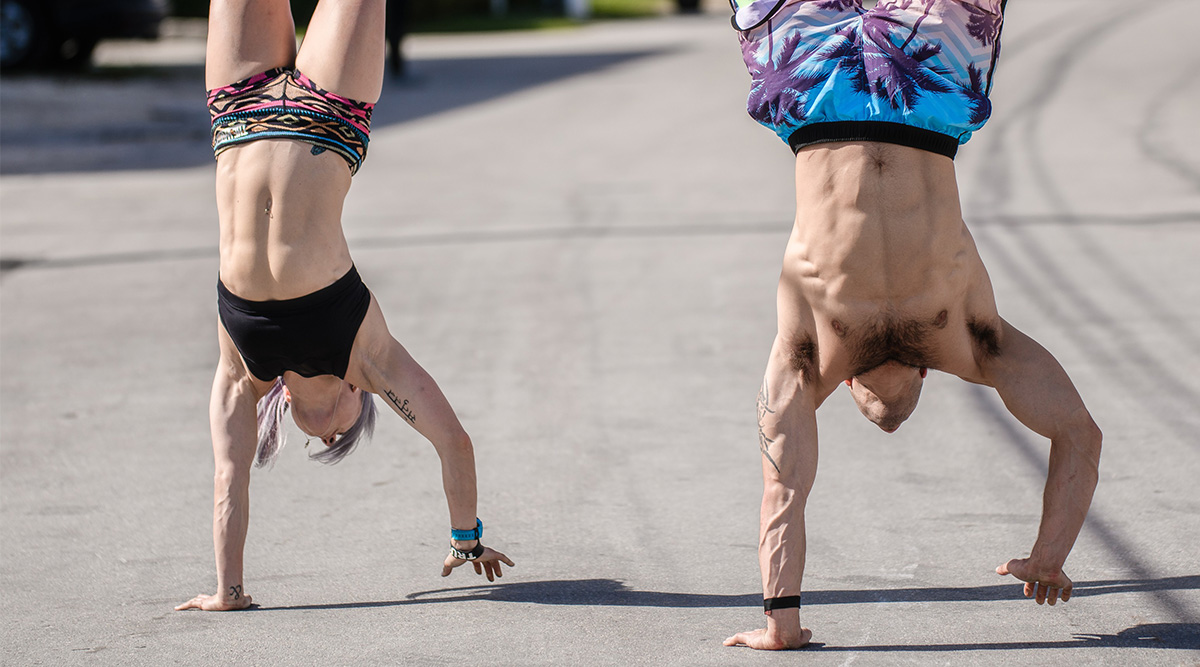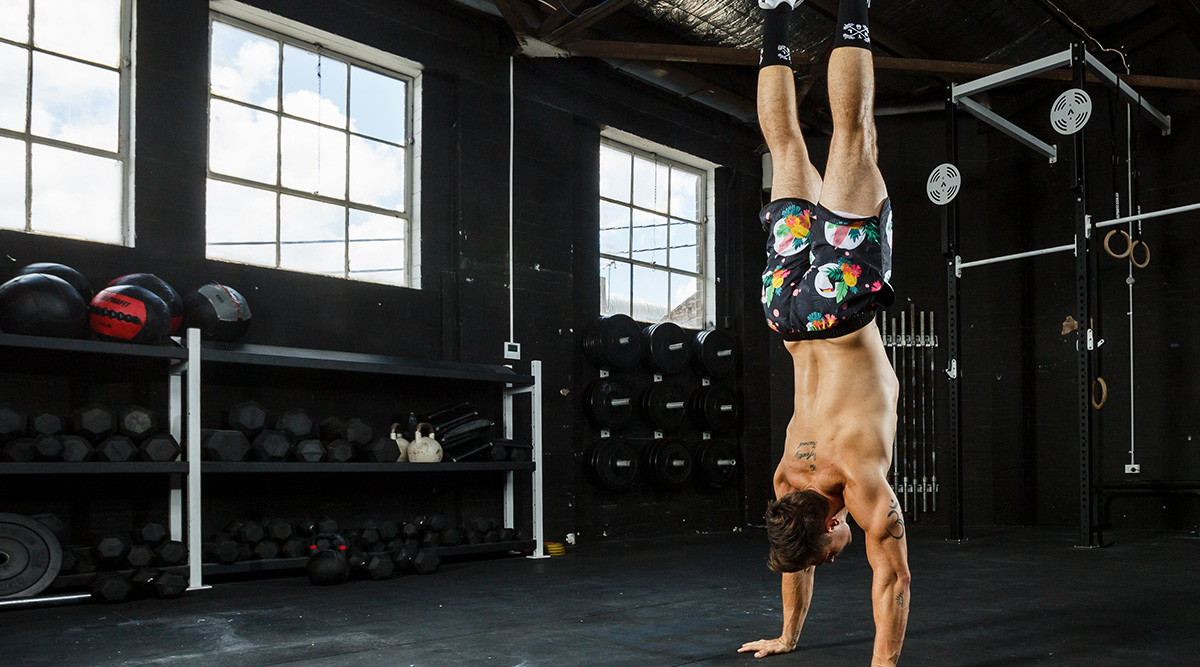It’s the best some of us can do to walk around without tripping. Walking around on your hands? That’s a whole other story. Handstand walks are like muscle-ups — difficult to master but once you do, you’re officially “in.” They’re also a cool party trick, but that’s beside the point.
Why are they so incredibly hard, though? Let’s walk through (see what I did there?) a few of the most common mistakes athletes make with handstand walking and what you should be doing instead.
3 Common Mistakes With Handstand Walks
1. Falling Your Way Across the Floor
You know what I’m talking about: those people who fling themselves upside down, take a few quick steps on their hands, and then fall. Wash. Rinse. Repeat.
This is not handstand walking.
Handstand walks are what some coaches refer to as a controlled fall. With your heels just slightly in front of you, you are indeed falling, but you’re still in control.
Having your heels in front of you is what propels you forward. It’s like a slight tip. You almost have to chase after your feet a little bit. But note: You are not actually falling over. With a controlled handstand walk, you decide when you land back on your feet.
2. Looking Ahead
Of course you want to look ahead so that you can see where you’re going. But angling your neck at such an angle is not only uncomfortable but it throws your whole position out of whack. (More on this in a minute.)
You might have heard this from your coach while practicing freestanding handstand holds. Look downward toward the floor, only slightly ahead of you. We promise you’re not going to run into a wall — at least, not without knowing it first.
Check out Fraser’s gaze here.
See how he’s not forcing his head forward so that he can see everything ahead of him? Be like Fraser.
3. Keep Your Body Engaged
You’ve probably seen athletes in the “scorpion” position when they flip upside down. Their backs are super arched, legs bent and dangling erratically.
To be clear, we’re all unique, and all of our positions will vary slightly. But at least in the beginning, as you’re trying to get handstand walks down, don’t scorpion it.
Your spine should be in a relatively neutral position — straight and safe. Remember what we said a moment ago about not looking forward? When you do, you essentially force your back to arch. At best, this can be uncomfortable. At worse, it can be a bit risky for your back health.
All of this means that you need to engage your core! If you look like a cooked spaghetti noodle, something’s wrong.
Keep your toes pointed and legs together, heels slightly ahead, as we discussed earlier.
As you progress, you might find that tweaking this position helps you improve your balance and walk faster. For instance, some athletes don’t keep their feet together. Instead, their feet “walk” in the air as they move forward. This isn’t something they likely do on purpose but rather a byproduct of the movement in general. Similarly, some athletes do bend their legs to move them forward faster and help them balance more precisely, like Katrin is here.
And indeed, some athletes will arch their backs slightly (while maintaining control, mind you).
But don’t cut corners. In the beginning, it’s important to establish a sturdy foundation. And that comes from an engaged body and clean form.
Bonus Tip
Remember, too, that upper body strength (and shoulder mobility) is crucial in being able to maintain the proper form. If you can’t hold a handstand against the wall without your shoulders immediately burning out, then you’re probably not ready to walk on your hands.
Keep building strength, work on mobility, and practice solid form, and you’ll be on your way to walking on your hands in no time.

